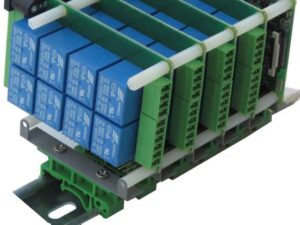 The Raspberry Pi is a tiny, yet powerful credit-card size computer ideally positioned to power the Home and Industrial Automation applications used in the Internet of Things. Although it’s computing power is thousands of times greater than the computer which landed Apollo 11 on the moon, it is rather helpless when it needs to interact with the real world.
The Raspberry Pi is a tiny, yet powerful credit-card size computer ideally positioned to power the Home and Industrial Automation applications used in the Internet of Things. Although it’s computing power is thousands of times greater than the computer which landed Apollo 11 on the moon, it is rather helpless when it needs to interact with the real world.
Sequent Microsystems designs and manufactures I/O Cards for Raspberry Pi. They expand the capabilities of Raspberry Pi with analog inputs and outputs (0-3.3V, 0-10V, 4-20mA), optically isolated inputs from 3 to 240VAC or DC, on-board relays, event counters, quadrature encoders, 1K/10K thermistors, RTD sensor inputs, Real Time Clock with battery backup, RS485/MODBUS communication, MOSFET and TRIAC load drivers. All their cards use only the I2C port for communicating with Raspberry Pi, leaving all the GPIO pins available for other tasks.
Three Sequent cards (Home, Building and Industrial Automation) are “Swiss Army Knife” types, packing all the possible functions in the available space. If extra functionality is desired, each card can be stacked up to eight levels. Additional universal inputs, relays or solid state outputs can be added using compatible cards. Up to eight cards of each type can be installed in any combination on a single Raspberry Pi.
 Build-in hardware watchdogs on all the “smart” cards can cycle the power on Raspberry Pi to ensure that mission critical projects recover if Raspberry Pi locks up.
Build-in hardware watchdogs on all the “smart” cards can cycle the power on Raspberry Pi to ensure that mission critical projects recover if Raspberry Pi locks up.
All cards use reliable and convenient pluggable terminal blocks and brass mounting hardware. The connector plugs are rated at 8A/300V, accept 28 to 16 AWG wires and offer the most flexible and reliable way of wiring Industrial or Home Automation controls.
The Sequent Raspberry Pi family is completed by a Super-watchdog with Li-Ion battery backup, which can keep the system running on battery for hours in case of power failure, and can notify you via email or SMS when power fails and comes back up. A stackable Smart Fan with proportional fan control which can keep the Raspberry Pi at a preset operating temperature.
Accessories include DIN-Rail adapters for horizontal or vertical mounting, and various breakout cards with screw, spring or pluggable connectors.
Most of the Sequent cards have the same form factor and can be installed in a 3D printable modular enclosure.
 All Sequent cards are Open Source. Complete hardware schematics can be downloaded from their website. All software, including the source code, can be downloaded from GitHub
All Sequent cards are Open Source. Complete hardware schematics can be downloaded from their website. All software, including the source code, can be downloaded from GitHub
Software support for all the cards includes Command Line, Python and Node-RED native nodes. Node-RED is a programming tool for wiring together hardware devices, APIs and online services in new and interesting ways. It provides a browser-based editor that makes it easy to design flows using nodes from a large library covering a wide range of automation tasks.
Most of the Sequent cards have been developed following customer requests. They have all the building blocks for developing custom cards which can help you bringing to market new projects at competitive prices.




